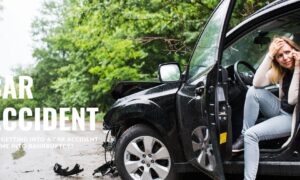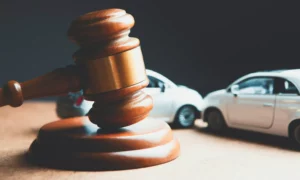Many people believe they will never get into an accident. They have never seen an accident in real life or rarely see them. As a result, they think accidents aren’t that common.
But they happen all the time. Reports show that five million car accidents happen yearly. You have to prepare for the eventuality that it happens to you.
Do you want to learn the steps to take after getting into a car accident? Read the guide below to learn how to handle things correctly.
1. Check Everyone for Injuries
Before you take any other action after getting into a car accident, your first goal should be the health of everyone involved.
Start by asking everyone in your car if they’re okay. Check yourself for injuries and make sure everyone else there is okay.
Once you determine that everyone in your car is okay, check on anyone else involved in the crash. This means leaving your vehicle and heading to the other drivers.
If anybody has an injury, call emergency services as soon as possible to get help. The longer you wait, the more chance of an injury getting worse.
Once you determine that everyone is fine or you’ve called for help, you can move to the next steps.
2. Protect the Accident Scene
The next part of dealing with a car accident is to protect the scene. You don’t want your vehicles to cause even more problems, so your goal is to get them to safety.
Move every vehicle involved to the side of the road or as far off the road as possible. Once you move everything, put on your blinkers to warn other drivers to be careful.
Don’t spend too much time doing this if you’re having trouble moving a vehicle. You’ll put yourself in more danger the longer you stay on the road. Put on the blinkers for any car still on the road and get to safety.
3. Document the Accident
Once you ensure everyone is safe and secure after the accident, the next step is to document the scene. To start, determine if there is visible damage to the vehicles involved. If there is, take pictures of the damage.
From there, get information from the other drivers. Get their license plate numbers, driver’s license information, insurance contacts, and anything else required.
If there are accident witnesses, see if they are willing to make a statement. If so, collect their contact information.
4. Contact the Police
Even if nobody has injuries after the accident, it’s still a good idea to contact the police. You’ll need to make a police report to get official documentation about everything that happened.
In some cases, insurance companies require a police report to process claims. Look into the procedures for filing a claim with your company to see if that’s a requirement for you.
In some cases, the police won’t show up at the scene if the accident isn’t bad. But you can still file a report at the police station, so go there to get the job done.
5. File a Claim
Once you have a police report and evidence from the crash, you can file a claim with the insurance company. No matter which person is at fault, you should always let your insurance company know what’s going on.
They can guide you through the next steps if you aren’t sure what to do. Once you let your insurance company know what happened, you can file a claim with the company that needs to pay.
This process will differ between companies, but it will mostly involve the same steps:
- Notify the claims department of an insurance company
- Get the required paperwork to fill out
- Hand over the paperwork and required evidence to the insurance company
Once the insurance company has your information, they’ll send a claims adjustor to handle the investigation.
6. Keep Track of Information
You shouldn’t just sit idle once you file a claim with your insurance provider. Yes, you may get results quickly in some situations. But others will require more patience.
This is especially true if you were injured during the crash. You won’t be able to include any ongoing or future medical expenses in the report since you aren’t aware of them yet.
Be sure to keep track of all of these things while you’re waiting on the insurance company. You can get compensation for these things and avoid getting into debt paying for medical bills.
7. Accept the Insurance Settlement
Once you’ve waited for some time, you should hear back from the insurance company about your settlement. In many cases, you won’t have a problem getting what you deserve. But there may be times when that won’t happen.
One problem is not getting enough money to cover their medical expenses. People are left footing the bill themselves and go into medical debt.
This is where it pays to find a personal injury attorney. Your injury lawyer will examine your case and appeal to the insurance company. If you plan on getting a much larger settlement, you can hire a lawyer on contingency and pay with a portion of your settlement.
Take Your Car Accident Seriously
The moment after a car accident may be one of the most stressful moments in your life. You may be hurt, not know what to do, and make mistakes. It pays to learn what to do beforehand if you want to navigate the situation the right way.
Luckily, you now know more about how to handle things after getting into a car accident. From getting information at the scene to working with a car accident lawyer, you have what you need to get results after your crash.
Do you want to read more tips that will help you navigate other challenging life situations? Check out the blog to find more helpful guides.



































